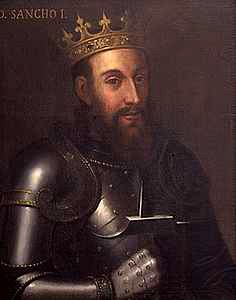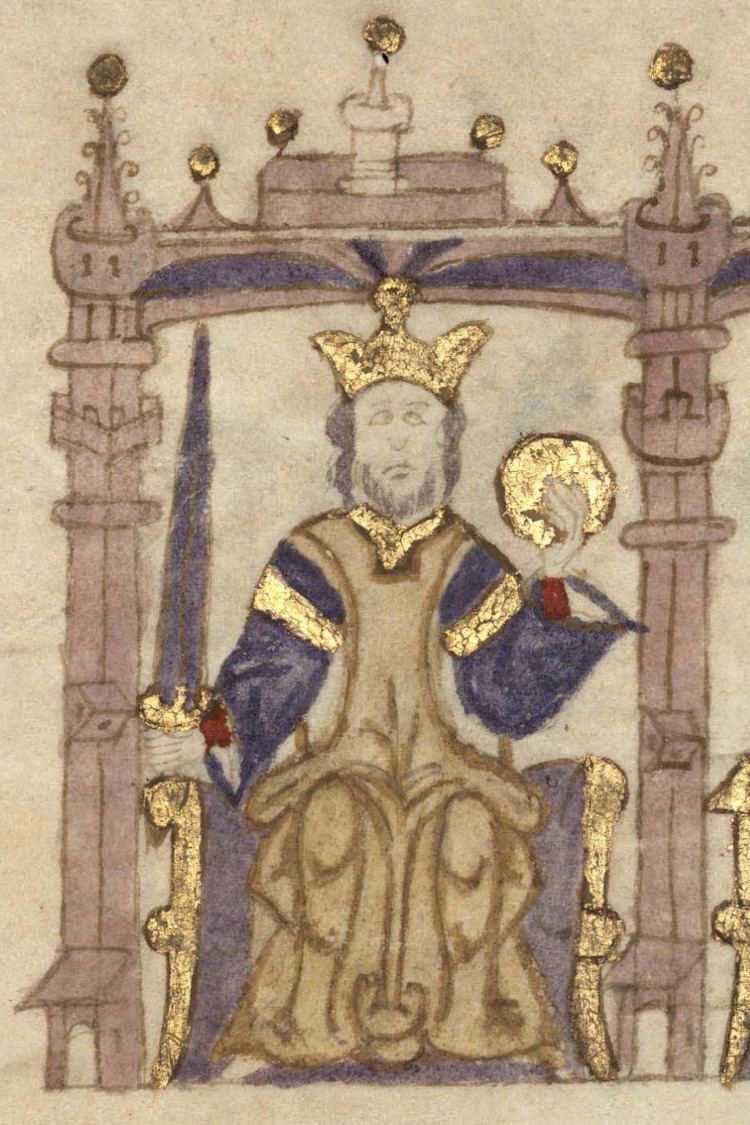Coronation 9 December 1185 Name Sancho of | Issue See Descendants | |
 | ||
Reign 6 December 1185 – 26 March 1212 Similar People Afonso I of Portugal, Afonso II of Portugal, Sancho II of Portugal, Afonso III of Portugal, Afonso V of Portugal | ||
Sancho I ([ˈsɐ̃ʃu]), nicknamed "the Populator" (Portuguese: "o Povoador"), King of Portugal (Coimbra, 11 November 1154 – 26 March 1211) was the second but only surviving legitimate son and fifth child of Afonso I of Portugal by his wife, Maud of Savoy. Sancho succeeded his father and was crowned in Coimbra when he was 31 years old on 9 December 1185. He used the title King of Silves from 1189 until he lost the territory to Almohad control in 1191.
Contents

Early life

Sancho was baptized with the name Martin (Martinho) since he was born on the feast day of Saint Martin of Tours. On 15 August 1170, he was knighted by his father, King Afonso I, and from then on he became his second in command, both administratively and militarily. At this time, the independence of Portugal (declared in 1139) was not firmly established. The kings of León and Castile were trying to re-annex the country and the Roman Catholic Church was late in giving its blessing and approval. Due to this situation Afonso I had to search for allies within the Iberian Peninsula. Portugal made an alliance with the Crown of Aragon and together they fought Castile and León. To secure the agreement, Sancho married Dulce, younger sister of King Alfonso II of Aragon, in 1174. Aragon was thus the first Iberian kingdom to recognize the independence of Portugal.
Succession

With the death of Afonso I in 1185, Sancho I became the second king of Portugal. Coimbra was the centre of his kingdom; Sancho terminated the exhausting and generally pointless wars against his neighbours for control of the Galician borderlands. Instead, he turned all his attentions to the south, towards the Moorish small kingdoms (called taifas) that still thrived. With Crusader help he took Silves in 1188. Silves was an important city of the South, an administrative and commercial town with population estimates around 20,000 people. Sancho ordered the fortification of the city and built a castle which is today an important monument of Portuguese heritage. However, military attention soon had to be turned again to the North, where León and Castile threatened again the Portuguese borders. Silves was again lost to the Moors in 1191.
Legacy
Sancho I dedicated much of his reign to political and administrative organization of the new kingdom. He accumulated a national treasure, supported new industries and the middle class of merchants. Moreover, he created several new towns and villages (like Guarda in 1199) and took great care in populating remote areas in the northern Christian regions of Portugal – hence the nickname "the Populator". The king was also known for his love of knowledge and literature. Sancho I wrote several books of poems and used the royal treasure to send Portuguese students to European universities. He died in Coimbra, aged 56.
Marriage and issue
Sancho married Dulce, daughter of Raymond Berenguer IV, Count of Barcelona, and Petronilla, Queen of Aragon. Eleven children were born from her marriage to King Sancho, nine of whom reached adulthood:
Children out of wedlock
With Maria Aires de Fornelos, daughter of Aires Nunes de Fornelos and Maior Pais, who was buried at the Monastery of Santo Tirso in accordance with her last will, Sancho had two children, both born before his marriage to Dulce of Aragon:
After Dulce's death, he had an affair with María Pais de Ribeira "a Ribeiriña" for whom he is often said to have written and dedicated a cantiga de amigo, A Ribeirinha, composed in 1199, the oldest text known in Portuguese poetry. That is contested nowadays by the Portuguese historian António de Resende Oliveira, who claims this cantiga was composed by Alfonso X of Castile or perhaps Sancho II of Portugal. At least six children were born of this relationship:
King Sancho also had one son with Maria Moniz de Ribeira, daughter of Munio Osorio, tenente of the comarca of Cabreira and Ribera,and of Maria Nunes of Grijó,:
